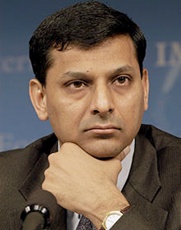RBI keeps policy rates unchanged
09 Aug 2016
Reserve Bank of India (RBI) today left the policy repo rate under the liquidity adjustment facility (LAF) unchanged at 6.5 per cent and kept the cash reserve ratio (CRR) of scheduled banks unchanged at 4.0 per cent of net demand and time liabilities (NDTL).
 Announcing the third bi-monthly policy today, outgoing RBI governor Raghuram Rajan said the central bank will continue to provide liquidity as required but progressively lower the average ex ante liquidity deficit in the system from one per cent of NDTL to a position closer to neutrality.
Announcing the third bi-monthly policy today, outgoing RBI governor Raghuram Rajan said the central bank will continue to provide liquidity as required but progressively lower the average ex ante liquidity deficit in the system from one per cent of NDTL to a position closer to neutrality.
Consequently, the reverse repo rate under the LAF will remain unchanged at 6.0 per cent, and the marginal standing facility (MSF) rate and the Bank Rate at 7.0 per cent.
RBI pointed to an uptick in consumer price inflation as measured by the headline consumer price index (CPI), which rose to a 22-month high in June, with a sharp pick-up in momentum overwhelming favourable base effects.
Consumer inflation accelerated to 5.77 per cent in June, close to the upper limit of the Reserve Bank's 2-6 per cent range, and above its target of 5 per cent by March next year.
Rajan, whose three-year term ends on 4 September, said he expected a spike in inflation, on the back of a hike this year in the salaries of millions of government employees and sticky core inflation.
The rise was mainly driven by food, with vegetable inflation higher than the usual seasonal rise at this time of the year, RBI noted.
RBI expects the economy to grow at 7.6 per cent as several factors on the domestic front, including a pick-up in south-west monsoon, helping to support the recovery.
Kharif sowing strengthened after a lacklustre start, particularly with respect to pulses. Barring cotton, jute and mesta, sowing of all crops is currently above last year's acreage.
Industrial production picked up in May on the back of manufacturing and mining, following a contraction in the preceding month. The uneven performance of industrial output reflects the lumpy and order-driven contraction of production in some sectors. There has also been a prolonged sluggishness in the capital goods sector, which is indicative of weak investment demand.
The rate of contraction in consumer non-durables slowed, pointing to some revival in rural demand while the pace of growth of consumer durables has been stable and buoyed by urban consumption demand, although it eased in May on base effects.
There are some signs of green shoots in manufacturing too, with purchasing managers and the Reserve Bank's industrial outlook survey indicating a pick-up in new orders, both domestic and external. Business confidence is also looking up in recent months, though the Reserve Bank's survey for March 2016 suggests that capacity utilisation, seasonally adjusted, is still weak.
On the external front, RBI said, since the second bi-monthly statement of June 2016, several developments have clouded the outlook for the global economy. Across advanced economies growth in Q2 of 2016 has been slower than anticipated, and the outlook is still mixed.
World trade remains sluggish in the first half of 2016 and international financial markets are in a flux amidst the Brexit vote, a plunge in equity markets worldwide, and increased currency volatility.













.jpg)






.jpg)









